|
|
Synchrotron Radiation and Its Applications Progress in Inorganic Materials
LIU Yunpeng, SHENG Weifan, WU Zhonghua
2021 Vol. 36 (9): 901–918
 Abstract
Abstract(
1497 )
 HTML
HTML(
88)
 PDF
PDF(25262KB)(
1740
)
Synchrotron Radiation (SR) is the electromagnetic radiation emitted along the tangent direction of the electron orbit by high-speed electrons moving in a circular accelerator when passing through a bending magnet. SR source, as a platform-type scientific and technological infrastructure, plays an important supporting role in the research and development of inorganic materials. SR techniques become an indispensable research tools of modern science and technology, and inorganic materials are one of the main application fields of SR techniques. Compared with conventional light source used for research, SR techniques in the study of inorganic materials have following obvious advantages: 1) higher obtained data qualities; 2) better spatial and temporal resolutions; 3) easier simulated in-situ and material service environment; 4) synchronously acquiring multi-scale, multi-faceted and multi-type structural information; 5) new means more likely to detect new structural characteristics. SR techniques help solve some key scientific problems in the field of inorganic materials, and greatly promote their research. Firstly, this paper briefly introduces the current status of SR sources and their three existing domestic SR facilities: Beijing Synchrotron Radiation Facility (BSRF), Shanghai Synchrotron Radiation Facility (SSRF), and National Synchrotron Radiation Laboratory (NSRL). Secondly, some application examples related to inorganic materials research are given from the four aspects of X-ray diffraction, scattering, spectroscopy and imaging. Finally, summary and prospect are given to the SR source, the structurally characterization techniques, and their application in inorganic materials.

|
|
|
Progress of Inorganic Filler Based Composite Films for Triboelectric Nanogenerators
GUO Yinben, CHEN Zixi, WANG Hongzhi, ZHANG Qinghong
2021 Vol. 36 (9): 919–928
 Abstract
Abstract(
932 )
 HTML
HTML(
57)
 PDF
PDF(17350KB)(
1494
)
The triboelectric nanogenerator (TENG) is a kind of green power source which can harvest and transform small mechanical energy into electricity. Triboelectric nanogenerators have various active materials, simple structures, and easy to integrate with other devices. However, its relatively low output power density hinders the further practical application of TENGs. How to improve the output performance of TENGs through the modification of the active triboelectric materials is one of the hottest spots. It is a facile and effective way to introduce functional fillers into polymer substrates to fabricate composite materials, which improve the triboelectricity of pristine material and bring new functions for the device. Thus, composite films are widely used in TENGs. For example, inorganic fillers like TiO2, SiO2, BaTiO3, ZnSnO3, MoS2, r-GO sheets, and nanofibril-phosphorene have been introduced into polymers to improve the output power density of TENGs by dozens of times. Based on domestic and international research, this review introduces the applications of the composite film in TENGs. The improvements of TENGs induced by the fillers are discussed from two aspects: the surface property and electrical property. Finally, future challenges in developing composites based TENGs are prospected.
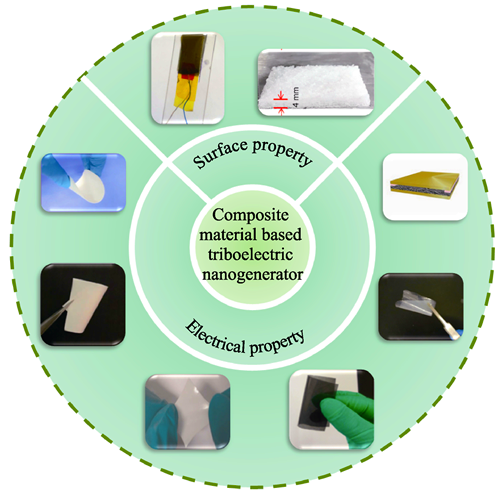
|
|
|
Three-dimensional Porous Biogenic Si/C Composite for High Performance Lithium-ion Battery Anode Derived from Equisetum Fluviatile
LI Kunru, HU Xinghui, ZHANG Zhengfu, GUO Yuzhong, HUANG Ruian
2021 Vol. 36 (9): 929–935
 Abstract
Abstract(
693 )
 HTML
HTML(
24)
 PDF
PDF(2570KB)(
977
)
Silicon-based materials are one of the most promising anode materials for lithium-ion batteries (LIBs) because of their theoretical capacity which is ten times higher than that of conventional graphite. However, the complex fabrication process and the high cost of silicon-based nanomaterials limit their practical application. In this study, equisetum fluviatile was used as raw material to prepare a three-dimensional porous biogenic Si/C composite (3D-bio-Si/C) by deep reduction, mild oxidation and carbon coating processes. The three-dimensional porous structure not only allows rapid diffusion of Li+, but also provides enough voids to accommodate the volume change on Li+ insertion and extraction. Benefiting from the abundant internal porosity and the high-strength outer carbon film of the three-dimensional porous structure, the obtained 3D-bio-Si/C shows remarkable electrochemical performance. This 3D-bio-Si/C can deliver reversible specific capacity of 1243.2 mAh/g at a current density of 1 A/g, and maintain 933.4 mAh/g after 400 cycles. This low-cost, scalable, green and sustainable route to synthesize high-performance silicon-based anode material derived from equisetum fluviatile lays a foundation for the commercial preparation of Si based lithium-ion battery anode materials.

|
|
|
Thermoelectric Transport Characteristics of n-type (PbTe)1-x-y(PbS)x(Sb2Se3)y Systems via Stepwise Addition of Dual Components
ZHANG Cencen, WANG Xue, PENG Liangming
2021 Vol. 36 (9): 936–942
 Abstract
Abstract(
363 )
 HTML
HTML(
12)
 PDF
PDF(6742KB)(
696
)
PbTe recently attracted extensive attentions as potential candidates for applications at intermediate temperatures. However, it is difficult to significantly improve the thermoelectric performance of n-type PbTe due to its relatively low carrier concentration and complicated band structures. In this study, the stepwise addition of dual components was utilized to verify the possibility for modulating the thermal and electrical transport characteristics of n-type PbTe-based materials. The results indicated that PbS and Sb2Se3 can improve the power factor and reduce thermal conductivity of PbTe, respectively. Optimization of band structures and enhancement of phonon scattering were realized by means of expanding band gap, producing point defects and secondary dispersoids. As a result, the merit of figure ZT was remarkably improved. In particular, (PbTe)0.94(PbS)0.05(Sb2Se3)0.01 exhibited the highest value of ZT=1.7 at 700 K simultaneously with almost doubled average ZT compared to the pristine PbTe. Accordingly, it seems that the stepwise addition of adequate dual components provides possible technological approach for improving thermoelectric performance of other materials.
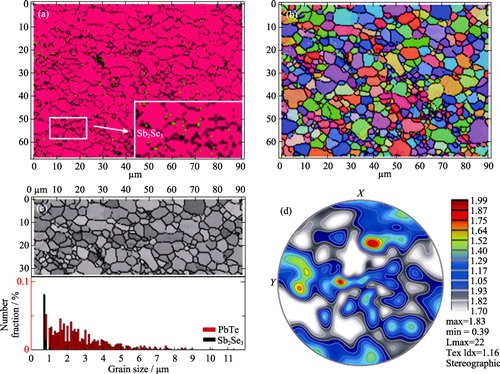
|
|
|
Honeycomb-like Carbon-supported Fe Single Atom Catalyst: Preparation and Electrocatalytic Performance in Oxygen Reduction Reaction
LIU Ziruo, LIU Wei, HAO Ce, HU Jinwen, SHI Yantao
2021 Vol. 36 (9): 943–949
 Abstract
Abstract(
795 )
 HTML
HTML(
35)
 PDF
PDF(3094KB)(
1491
)
Single atom catalysts (SACs) have emerged as an attractive concept for promoting heterogeneous reactions due to the unique properties, such as high activity and nearly 100% atom utilization. However, the synthesis of SACs remains a challenge due to the sintering of metal atoms at high temperature. In this study, Fe single atom on N doped porous carbon (Fe SA-NC) catalyst was obtained by ultrastrong polarity of molten salt (MS). Fe SA-NC shows honeycomb-like porous morphology and possesses a high specific surface area of 2072 m2·g-1. The content of Fe element in Fe SA-NC is 0.57wt%. The isolated Fe atoms are observed by AC HAADF-STEM, and the X-ray absorption fine structure (XAFS) analysis confirms that Fe atoms disperse in the form of Fe-N4 on the carbon substrate. Fe SA-NC shows 0.85 V half-wave potential and 5.79 mA·cm-2maximum current density for ORR in 0.1 mol/L KOH solution. Fe SA-NC displays high selectivity for ORR four electron pathway (H2O2 yield<2%, electron transfer number is 3.9), outstanding stability, and good methanol tolerance.
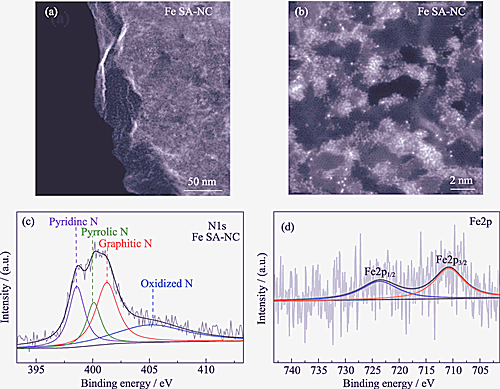
|
|
|
Preparation and Gas Sensing Properties of SnO2/NiO Composite Semiconductor Nanofibers
CHU Yuxing, LIU Hairui, YAN Shuang
2021 Vol. 36 (9): 950–958
 Abstract
Abstract(
572 )
 HTML
HTML(
32)
 PDF
PDF(2338KB)(
1092
)
SnO2/NiO composite semiconductor nanofibers with different Sn contents were prepared by electrospinning combined with chemical precipitation and high temperature calcination. Morphology, structure and elemental content of the samples were characterized. Taking ethanol as the target gas, the gas sensing properties of SnO2/NiO nanofibers and the influence of Sn content on the gas sensing properties of the composite nanofibers were investigated. The results show that the SnO2/NiO composite nanofibers have a three-dimensional network structure, and the SnO2 composite can significantly enhance gas sensing properties of NiO nanofibers. With the increase of SnO2 content in composite fibers, the response of samples to ethanol is enhanced. Among them, the SnO2/NiO nanofibers with the highest sensitivity show response value of 13.4 to 100×10-6 ethanol (volume fraction) at the optimum working temperature of 160 ℃. The maximum response value of the SnO2/NiO nanofibers exhibits 8.38 times enhancement compared to that of NiO nanofibers. Compared with comercial MQ-3, a commonly used ethanol sensor, the SnO2/NiO composite nanofibers have lower optimal working temperature and higher response sensitivity, which shows great potential in practical application.
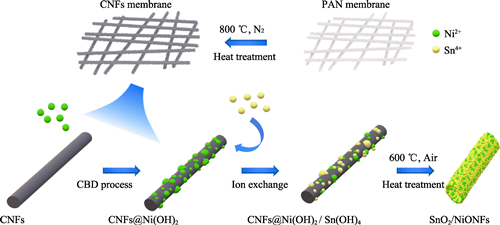
|
|
|
Preparation of Silicon Nitride with High Thermal Conductivity and High Flexural Strength Using YbH2-MgO as Sintering Additive
WANG Weide, CHEN Huanbei, LI Shishuai, YAO Dongxu, ZUO Kaihui, ZENG Yuping
2021 Vol. 36 (9): 959–966
 Abstract
Abstract(
509 )
 HTML
HTML(
15)
 PDF
PDF(3244KB)(
749
)
Silicon nitride with high thermal conductivity was obtained by two-step sintering method using YbH2-MgO as sintering additive. The effect of YbH2-MgO on shrinkage behavior, phase composition, microstructure, thermal conductivity, and flexural strength was investigated. The nitrogen-riched and oxygen-lacked oxynitride liquid phase was generated owing to the elimination of SiO2 by YbH2. Both the removal of lattice oxygen and the growth of β-Si3N4 were stimulated by the liquid phase. Therefore, compared to Yb2O3-MgO doped sample, silicon nitride with enlarged grains, purified lattice and reduced intergranular phase was obtained. Ultimately, its thermal conductivity increased by 13.7% from 115.32 to 131.15 W·m-1·K-1 after sintering at 1900 ℃ for 24 h by substituting Yb2O3 with YbH2. Although the replacement of Yb2O3 by YbH2 leads to enhanced flexural strength at low temperature, it tends to reduce the flexural strength at high temperature. The optimal flexural strength of (1008±35) MPa was achieved after sintering at 1800 ℃ for 4 h. This variation related mainly to the exaggerated bimodal microstructure. This work signifies that YbH2-MgO is effective for obtaining Si3N4 ceramics with both high flexural strength and high thermal conductivity.
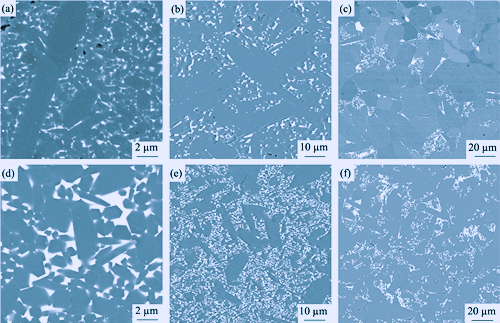
|
|
|
Crosslinking of Active Polycarbosilane Initiated by Free Radical and Its Application in the Preparation of SiC Fibers
WANG Yuanjie, PEI Xueliang, LI Haoyi, XU Xin, HE Liu, HUANG Zhengren, HUANG Qing
2021 Vol. 36 (9): 967–973
 Abstract
Abstract(
476 )
 HTML
HTML(
21)
 PDF
PDF(7147KB)(
946
)
In the preparation of SiC ceramic fibers based on precursor polycarbosilane, the crosslinking treatment is a neccessary process to maintain the fiber morphology and improve the ceramic yield. In this study, polycarbosilane containing acrylate group (A-PCS) was used as raw material, and the thermal free radical initiator was introduced to realize the crosslinking formation during the pyrolysis process. FT-IR and DSC were used to analyze the influence of initiator content on crosslinking degree, crosslinking rate and thermal degradation rate of A-PCS; TG, elemental analysis and XRD were used to analyze the evolution of ceramic yield, composition and amorphous change with temperature. The introduction of free radical thermal initiator can improve the crosslinking rate of acrylate group in A-PCS and reduce the thermal weight loss at the crosslinking stage. When free radical thermal initiator (weight percent 1%) was added, the acrylate group was consumed completely after heating to 250 ℃ at 5 ℃/min and the ceramic yield at 1500 ℃ was 69.5%. A-PCS fibers with diameter of 2-5 μm were obtained by electrospinning process, and then transformed into SiC fibers by subsequent pyrolysis. The morphology of the SiC fibers was regular with no fusion phenomenon. In addition, with the increase of pyrolysis temperature, the amorphous SiC fiber can be transformed into crystalline structure.
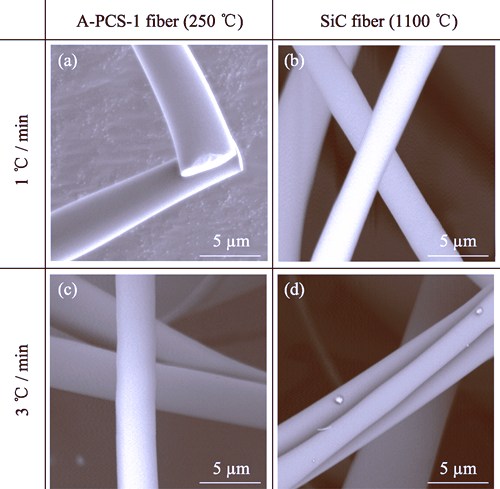
|
|
|
Nd-doped Calcium Silicate: Photothermal Effect, Fluorescence Performance, and Biological Properties of Its Composite Electrospun Membrane
MA Lingling, CHANG Jiang
2021 Vol. 36 (9): 974–980
 Abstract
Abstract(
305 )
 HTML
HTML(
4)
 PDF
PDF(6740KB)(
625
)
Biomaterials with photothermal effect and tissue repair activity have potential applications in the field of regenerative medicine. Considering the dual functions of fluorescence and photothermal effect of rare earth element Nd, and the excellent tissue repair biological activity of calcium-silicon (Ca-Si) based materials, here Nd-Ca-Si-based bioceramics (Nd/CS) powder we prepared by introducing Nd into calcium silicate through co-precipitation method and sintering at temperatures above 800 ℃, and evaluated phase composition, photothermal, and fluorescence properties of the powder. We further prepared a ceramic powder/polymer composite electrospun membrane, and evaluated its physical, chemical and biological properties. The results showed that Nd/CS ceramic powder and composite membrane not only had excellent photothermal performance and fluorescence emitting effects, but also showed fluorescence thermometry property. Preliminary cell experiments confirmed that the composite membrane was bioactive to stimulate fibroblast activity. This Nd-Ca-Si-based bioceramic and its composite material with integrated photothermal, fluorescence imaging/fluorescence thermometry properties and bioactivity, may have potential applications in regenerative medicine.
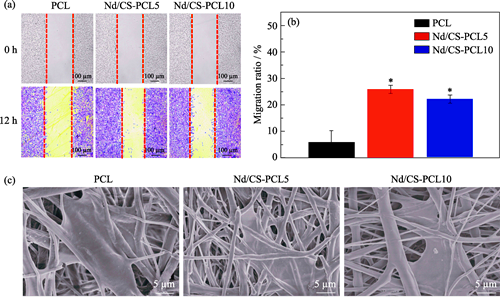
|
|
|
Injectable Hyaluronan/Hydroxyapatite Composite: Preparation, Physicochemical Property and Biocompatibility
ZHU Yutong, TAN Peijie, LIN Hai, ZHU Xiangdong, ZHANG Xingdong
2021 Vol. 36 (9): 981–990
 Abstract
Abstract(
595 )
 HTML
HTML(
13)
 PDF
PDF(4134KB)(
806
)
With good cytocompatibility, bioactivity, and slow degradation rate, hydroxyapatite (HAP) may remedy drawbacks of hyaluronan (HA) as soft tissue filler. Here, we prepared HA-HAP composite hydrogels by one-step reaction method, investigated various processing parameters on their physicochemical properties, and evaluated their biological performance. As-prepared HA-HAP composite hydrogels contained 1.5%-3.0% HA and 2.38%-15.8% HAP with good sterilization stability. Swelling-ratio and mechanical performance of the composite hydrogels could be adjusted by controlling HAP content and crosslinking reagent. The equilibrium swelling ratio achieved over 90% only after 1 h swell, and the swelling properties fitted well with 1st-order exponential decay equations. By 1500 U/mL HAase solutions, the composites degraded 95% after only 2 min and dispersed rapidly, showing good enzymatic degradability. HAP was demonstrated not only endowing the composite hydrogels with better plasticity for facial soft tissue filler and contour modification, but also providing good microenvironment for attachment and proliferation of fibroblasts. Therefore, the as-prepared HA-HAP composite could be used as a long-acting filler for remodeling extracellular matrix, and thus potentially applied in cosmetic medicine.

|
|
|
Unveiling the Intrinsic Low Thermal Conductivity of BiAgSeS through Entropy Engineering in SHS Kinetic Process
YANG Dongwang, LUO Tingting, SU Xianli, WU Jinsong, TANG Xinfeng
2021 Vol. 36 (9): 991–998
 Abstract
Abstract(
432 )
 HTML
HTML(
16)
 PDF
PDF(8719KB)(
837
)
It is of great significance to find the ultra-rapid preparation technology of materials and realize the optimization of electroacoustic transport properties in the research of thermoelectric materials. In this study, BiAgSeS compounds were successfully prepared by self-propagating high temperature synthesis (SHS), of which the kinetic process was systematically studied. It is found that the melting of Bi is the key to activate and initiate SHS reaction. In addition, the high concentrations of nano- and atomic-scale strain field regions, and screw dislocations produced in the non-equilibrium SHS process provide an everlasting step source for material growth and make the grains possess the layered structure. In the process of material densification, the step source continues to play a role in dominating grain growth, and thus leaving nanopores at the grain boundary. Because of these defects, compared with samples via melting-quenching (MQ) combined with plasma activated sintering (PAS), the SHS+PAS samples can slightly increase the electrical conductivity and significantly reduce the lattice thermal conductivity by ~6%. Finally, the thermoelectric properties are optimized, and the ZT is improved in the whole temperature range with the maximum value of 0.5 obtained at 773 K.
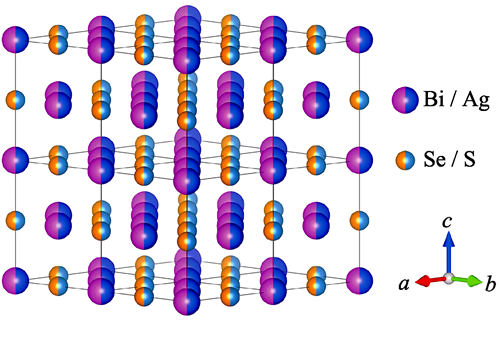
|
|
|
Performance of Amorphous Lithium Phosphate Coated Lithium Titanate Electrodes in Extended Working Range of 0.01-3.00 V
WANG Ying, ZHANG Wenlong, XING Yanfeng, CAO suqun, DAI Xinyi, LI Jingze
2021 Vol. 36 (9): 999–1005
 Abstract
Abstract(
471 )
 HTML
HTML(
17)
 PDF
PDF(1693KB)(
696
)
Surface coating has long been an effective means to improve the electrochemical performance of electrode materials for Li-ion batteries. In this study, the traditional micron-sized Li4Ti5O12 anodes are coated with amorphous lithium phosphate by radio frequency (RF) magnetron sputtering. The characterized morphology indicates that the electrodes are covered by a thin amorphous lithium phosphate coating layer, showing a very smooth surface. Both the rate performance and cycle performance of the electrodes are enhanced markedly by the coating layer in the voltage range of 0.01-3.00 V. When the discharge-charge currents are 35 and 1750 mA∙g-1, the capacities are elevated to 265 and 151 mAh∙g-1, respectively, which are higher than those of the uncoated ones (240 and 22 mAh∙g-1). After further discharge-charged for 200 cycles at 88 mA∙g-1, the coated electrodes still maintain a high reversible capacity of 238 mAh∙g-1. This result clearly suggests that the thin layer can stabilize the solid electrolyte interface, maintain the integrity of the interparticle electronic passage and form a cross-linked ionic conducting network for Li4Ti5O12 grains on the surface.

|
|
|
In Vitro Mineralization Property of Borosilicate Bioactive Glass under DC Electric Field
ZHU Zimin, ZHANG Minhui, ZHANG Xuanyu, YAO Aihua, LIN Jian, WANG Deping
2021 Vol. 36 (9): 1006–1012
 Abstract
Abstract(
504 )
 HTML
HTML(
9)
 PDF
PDF(1834KB)(
723
)
Borosilicate bioactive glass has excellent bioactivity and bone conductivity, but most bioactive glasses exhibit nonlinear degradation and mineralization behavior, with mineralization property declining over time. The direct current (DC) electric field, as an outfield-assisted approach to regulation, can interfere in the ion exchange and diffusion of the glass to modify its property. In this study, a DC electric field is used to intervene in vitro mineralization of borosilicate bioactive glass to accelerate the bioactivity in the slower degradation phase. Borosilicate bioactive glass with the composition of 18SiO2-6Na2O-8K2O-8MgO-22CaO-2P2O5-36B2O3, prepared by the melting method, was immersed in simulated body fluid (SBF). A current in range of 0-90 mA was applied to study the effect of DC electric field on the degradation and in vitro mineralization property of borosilicate bioactive glass. The results show that the application of electric field increases the degradation rate and ion release of borosilicate bioactive glass. Compared to the control group (without electric field), the weight loss rate increased by 3%-5% and the dissolution of B and Ca ions increased by 2.3-2.9 and 1.9-2.3 times, respectively. Meanwhile, the electric field assists glass network hydrolysis and surface hydroxylation, accelerating the generation of hydroxyapatite (HA). Analyzing the surface structure of the borosilicate bioactive glass particles, we found that an apatite layer was formed on the surface of the sample exposed to the electric field. Hence, the application of a DC electric field can improve the degradation and in vitro mineralization property of bioactive glass, providing a new idea for bone repair effect enhancement.
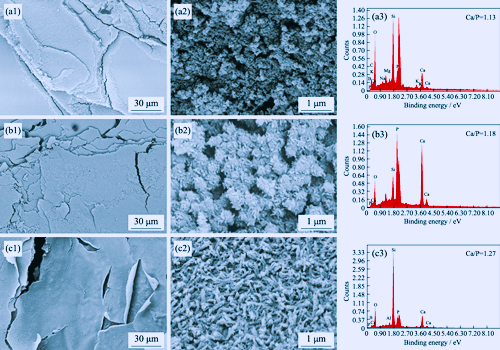
|
|